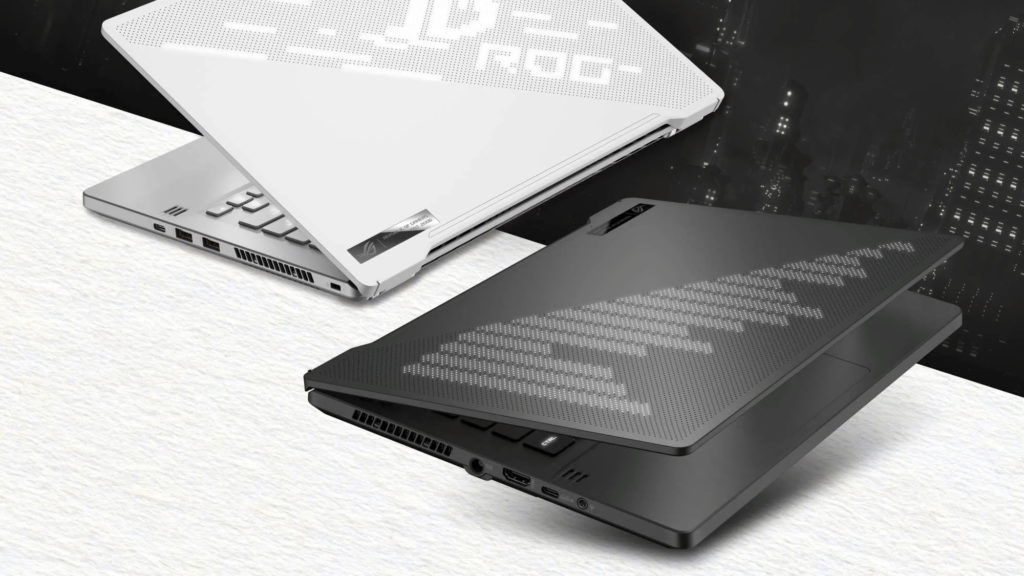
Reviews for ASUS’s ROG Zephyrus G14 – one of the first laptops to boast AMD’s new Ryzen 4000 “Renoir” APUs – are out, and they’re positively glowing. Everyone seems to agree that AMD has finally trounced Intel in the mobile arena, as the company’s new 7 nm chips offer an incredible price/performance ratio that can’t be matched by its competitor. Here are some highlights:
Hardware Unboxed/TechSpot: The big one here is the Ryzen 9 4900HS versus the Core i9-9880H. These are similar class processors, 8-core versus 8-core and should give us a pretty solid indication of what to expect from 10th-gen as well, if we get minor clock speed improvements from Intel as is rumored.
In most long term, multi-threaded workloads, we’re seeing 35% better performance from the Zen 2 chip. We also get impressive numbers for video encoding. Single-threaded workloads are also typically faster, or in the worst case scenarios like light productivity, equivalent to Intel’s. However, performance does fall behind in data heavy benchmarks like Excel, Photoshop and Matlab.

Hexus: The Intel Core i9-9980HK set new records in multi-threaded performance, befitting a £3,499 laptop like the Gigabyte Aero 17 HDR. AMD comes armed to the 8C16T mobile party with more ammunition, besting Intel’s finest in a 14in gaming laptop weighing just 1.6kg. Impresssive.
And the Cinebench R20 score is even more impressive, where the Zephyrus is 30 percent faster. Putting these scores into perspective requires comparison against desktop chips, not mobile, and our own testing shows the R9 4900HS to be quicker than a desktop R7 2700X released a couple of years’ ago – and that was certainly no slouch.
Premium desktop-like performance in a thin-and-light gaming laptop? Yup.
KitGuru: The new Ryzen 9 4900HS CPU in Asus ROG Zephyrus G14 makes us keen to see more laptops with regular non-HS processors so we can get a feel for the whole family of Ryzen 4000 CPUs. We also need to use the AMD 7nm Vega graphics to see how well they work in a laptop so yes, we are slightly frustrated at the moment but yes, we are also impressed by Asus ROG Zephyrus G14. This is a good laptop that should make for a highly portable working machine, although we would have preferred a version with a QHD screen rather than FHD.
Linus Tech Tips: AMD just dropped their mobile CPUs… and hot damn they are good.
PC World: To put AMD’s Ryzen 4000 in perspective, you have to understand that in AMD’s 50-year history, it has never beaten Intel in laptops. It’s won a few battles in desktop: Athlon, Athlon 64, and the current desktop Ryzen chips. AMD’s fortunes change dramatically with the Ryzen 4000 chips, which are clearly the new leader in performance laptops.
The Verge: Asus and AMD have successfully put Intel on notice. Last year’s Core i7-powered Blade Stealth 13 was the first 13-inch machine that came with a GTX 1650 Max-Q GPU. The most demanding game it could handle was what Engadget called “a stuttery Destiny 2 experience.” Still, many gamers hailed it as a triumph for being a 3.24-pound laptop that could run that title at all.
The Ryzen-powered G14 weighs just a bit more than the Stealth GTX and it games better. I see no reason to buy the Stealth GTX or any pricier gaming ultraportable when this laptop exists. AMD has rewritten the rules of what a gaming laptop can be.
Tom’s Hardware: The Asus ROG Zephyrus G14 doesn’t have a top-end GPU inside, but it punches above its weight class for an affordable price. It has comparable performance to the 45W, 6-core, 12 thread Intel CPUs in a similar price point.
